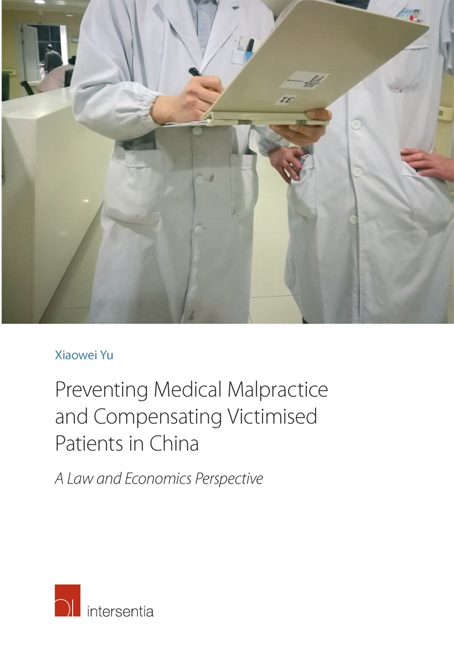 Preventing Medical Malpractice and Compensating Victimised Patients in China
Preventing Medical Malpractice and Compensating Victimised Patients in China Book contents
- Frontmatter
- Acknowledgements
- Contents
- Abbreviations
- List of Figures and Tables
- Chapter 1 Introduction
- Part I Legal Remedies for Medical Malpractice in China
- Part II Economic Theories and Empirical Evidence
- Part III Applying the Economic Observations to China
- Introductory note
- Chapter 12 An Economic Analysis of the Chinese Medical Malpractice System
- Chapter 13 Concluding Remarks and Policy Recommendations
- Summary
- Bibliography
- Appendix 1 Legislation
- Appendix 2 Cases
- Appendix 3 Semi-Structured Interviews
- Valorisation Addendum
- Curriculum Vitae
Chapter 12 - An Economic Analysis of the Chinese Medical Malpractice System
from Part III - Applying the Economic Observations to China
Published online by Cambridge University Press: 29 September 2018
- Frontmatter
- Acknowledgements
- Contents
- Abbreviations
- List of Figures and Tables
- Chapter 1 Introduction
- Part I Legal Remedies for Medical Malpractice in China
- Part II Economic Theories and Empirical Evidence
- Part III Applying the Economic Observations to China
- Introductory note
- Chapter 12 An Economic Analysis of the Chinese Medical Malpractice System
- Chapter 13 Concluding Remarks and Policy Recommendations
- Summary
- Bibliography
- Appendix 1 Legislation
- Appendix 2 Cases
- Appendix 3 Semi-Structured Interviews
- Valorisation Addendum
- Curriculum Vitae
Summary
INTRODUCTION
Much legislative endeavour has been made to build a credible medical malpractice liability system in China. The system is very young. It was formally established in the second half of the 1980s, and has been drastically reformed twice since then. Voluminous literature regarding the Chinese medical malpractice liability reforms is currently available, most of which has attempted to evaluate the old and/or the current medical malpractice liability system from the perspective of legal doctrine. Some have focused on the medical malpractice law in action and tried to explain why medical dispute resolution in China is often associated with violent malpractice mobs. However, none of these studies can tell us whether the Chinese medical malpractice liability system is efficient at preventing medical errors and compensating victims of medical malpractice or not.
Be that as it may, a minority of studies have touched upon the medical malpractice issues in China from the perspective of law and economics. Several journal articles in Chinese have briefly introduced the classic model of tort liability and made some comments on how to improve the Chinese medical malpractice liability law. Two theses have explained the classic model of tort law in detail, applied the model to evaluate the sub-rules of Chinese medical malpractice law systematically and made some recommendations on how the current law might be improved. However, all these studies have only examined the medical malpractice law in the books without paying attention to the law in action. As was presented in Chapter 4, there are marked variations between the law in books and the law in action in the context of Chinese medical malpractice law. Hence, it is insufficient to evaluate the medical malpractice liability system without looking at the empirical evidence.
One article published in English has attempted to evaluate the new Chinese medical malpractice law provided for in the Tort Law 2009 on the basis of some empirical evidence. This article deserves serious attention because its author Kearney strongly argued as follows,
China's new law is unlikely to cause any substantial decrease in the level of malpractice in the country. The Tort Liability Law is an inefficient model, the burden of which will be borne by under-funded hospitals and patients who are already under-served.
- Type
- Chapter
- Information
- Preventing Medical Malpractice and Compensating Victimised Patients in ChinaA Law and Economics Perspective, pp. 449 - 478Publisher: IntersentiaPrint publication year: 2017


